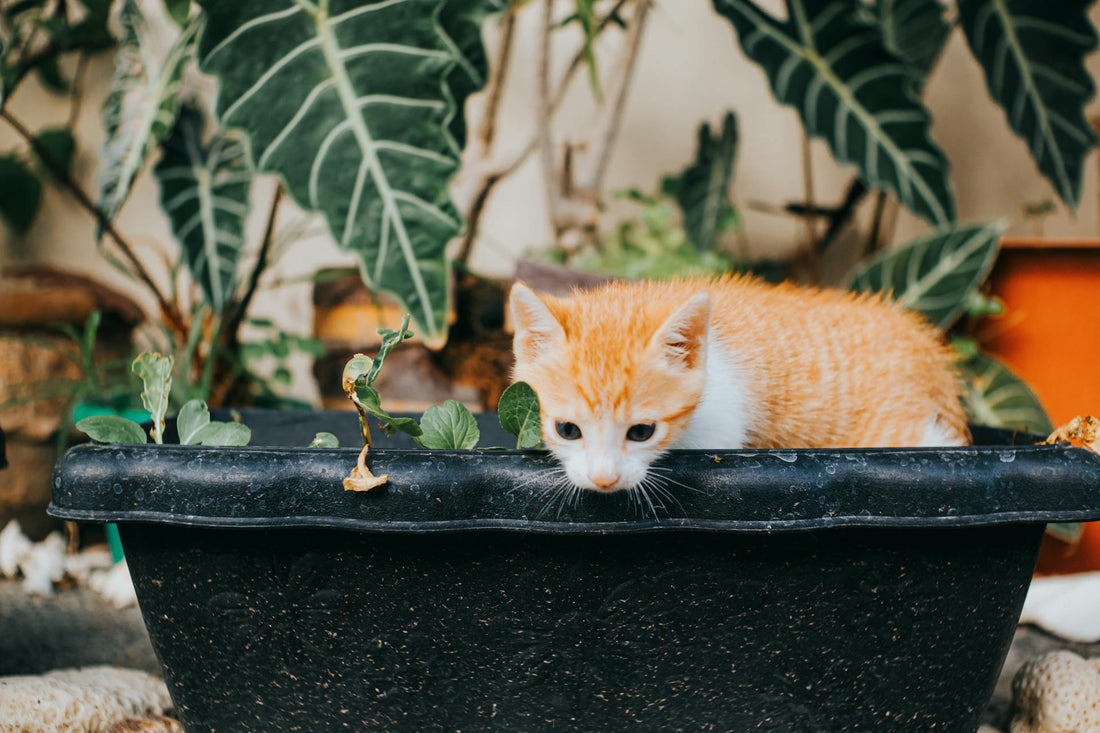If leaving your cat alone, even just for a few hours, leaves you worried, you're not overreacting. Cats may seem independent, but many experience cat separation anxiety when left alone. They form strong bonds with their humans, and separation can lead to distressing behaviors that go beyond typical feline aloofness.
Separation anxiety in cats is real and often misunderstood. Whether your cat is meowing excessively when you leave, acting clingy when you're home, or urinating in inappropriate places, these could be signs of a bigger issue: separation anxiety syndrome.
Fortunately, with the right strategies, you can support your cat’s emotional well-being and help ease their anxiety over time.
Recognizing Cat Separation Anxiety
Before you can help, you need to spot the signs. Common behaviors associated with cat separation anxiety include:
-
Excessive vocalization when you're leaving or not home
-
Destructive scratching or chewing
-
Urinating or defecating in inappropriate places
-
Clinginess or following you constantly when you're home
-
Loss of appetite
-
Over-grooming or compulsive licking
Though less studied than in dogs, separation anxiety in cats is increasingly recognized in veterinary medicine as a significant issue. It often develops when cats are left alone for long periods without enough stimulation or structure.
1. Stick to a Consistent Routine
Cats find comfort in predictability. A stable schedule helps reduce uncertainty, which can trigger anxiety. Set consistent times for:
-
Feeding
-
Morning and evening play sessions
-
Quiet time before bed
Even if your broader schedule fluctuates, keeping anchor points like mealtimes consistent can reduce your cat's anxiety when you're away.
2. Enrich Their Environment
A bored cat is an anxious cat. Mental stimulation and enrichment can help your cat stay occupied in your absence. Try:
-
Puzzle feeders to provide food-driven mental challenges
-
Interactive toys or rotating toys every few days
-
Window perches for bird-watching
-
Cat trees, cardboard boxes, and cozy nooks
Enrichment isn’t a luxury, it’s a necessity when managing separation anxiety and promoting overall well-being.
3. Use Scent and Familiar Comforts
Cats rely heavily on scent for reassurance. Leave behind:
-
An unwashed T-shirt or blanket that smells like you
-
Their favorite blanket or toy in a sunny corner
Some pet parents find that pheromone sprays or diffusers can help establish a calming environment. Look for products designed to mimic a cat’s natural calming signals.
4. Create a Safe, Quiet Space
Designate a quiet, inviting space your cat can retreat to. This may be:
-
A warm windowsill with a soft bed
-
A quiet room with toys and a litter box
-
A hideaway with your scent and their favorite comforts
Creating a safe zone helps build a sense of security and reduces cat separation anxiety over time.
5. Play Before and After You Leave
Short play sessions can go a long way. Before leaving, spend 10–15 minutes engaging your cat with toys like feather wands or laser pointers. This mimics hunting behavior and helps release energy.
When you return, spend time reconnecting. Play, petting, or simply relaxing together helps reestablish trust and ease your cat’s anxiety.
6. Consider Natural Calming Products
Some cat owners are exploring natural remedies to manage separation anxiety, including CBD oil for pets. Products like Farmulated’s Full-Spectrum Salmon CBD Pet Oil 750mg are designed to promote calm and support behavior balance.
CBD may help some cats better tolerate periods of separation, though responses vary. Always consult a veterinarian before introducing new supplements into your pet’s routine.
Browse Farmulated’s pet CBD collection to explore options designed specifically for pets.
7. Gradual Absence Training
If your cat panics as soon as you pick up your keys, try desensitization training:
-
Start by leaving for 5–10 minutes, then returning calmly.
-
Gradually increase the time you're gone.
-
Avoid dramatic exits or greetings.
This helps reduce the emotional spike that comes from separation and teaches your cat that your departure isn’t a big deal.
8. Hire a Pet Sitter or Try a Companion
For extended absences, like travel, consider hiring a pet sitter to check in and spend time with your cat. Even short daily visits can make a difference.
In multi-pet households, other pets can provide companionship. But if you're considering adding a second cat, be sure your current cat enjoys feline company and introduce them slowly to avoid triggering more anxiety.
9. Use Pet Tech to Stay Connected
Devices like pet cameras can let you check in during the day and even talk to your cat. While this won’t replace your presence, some cats respond positively to hearing your voice.
Cameras can also alert you to signs of distress, helping you adjust your care routine as needed.
Final Thoughts
Cat separation anxiety is more common than many realize, and it’s not something your cat will simply “get over.” Left unmanaged, it can lead to stress-related health and behavior issues.
Support your cat by combining:
-
Structured routines
-
Mental and physical enrichment
-
Gradual training
-
Scent comfort
-
Natural calming tools
-
Compassionate interaction
Every cat is different. What calms one might not work for another. Be patient, observe closely, and experiment with solutions that meet your pet’s specific needs.
For pet owners exploring holistic options, check out Farmulated’s full-spectrum CBD products, including formulas tailored for both humans and pets. A calm cat often means a calm household, and that’s a win for everyone.





